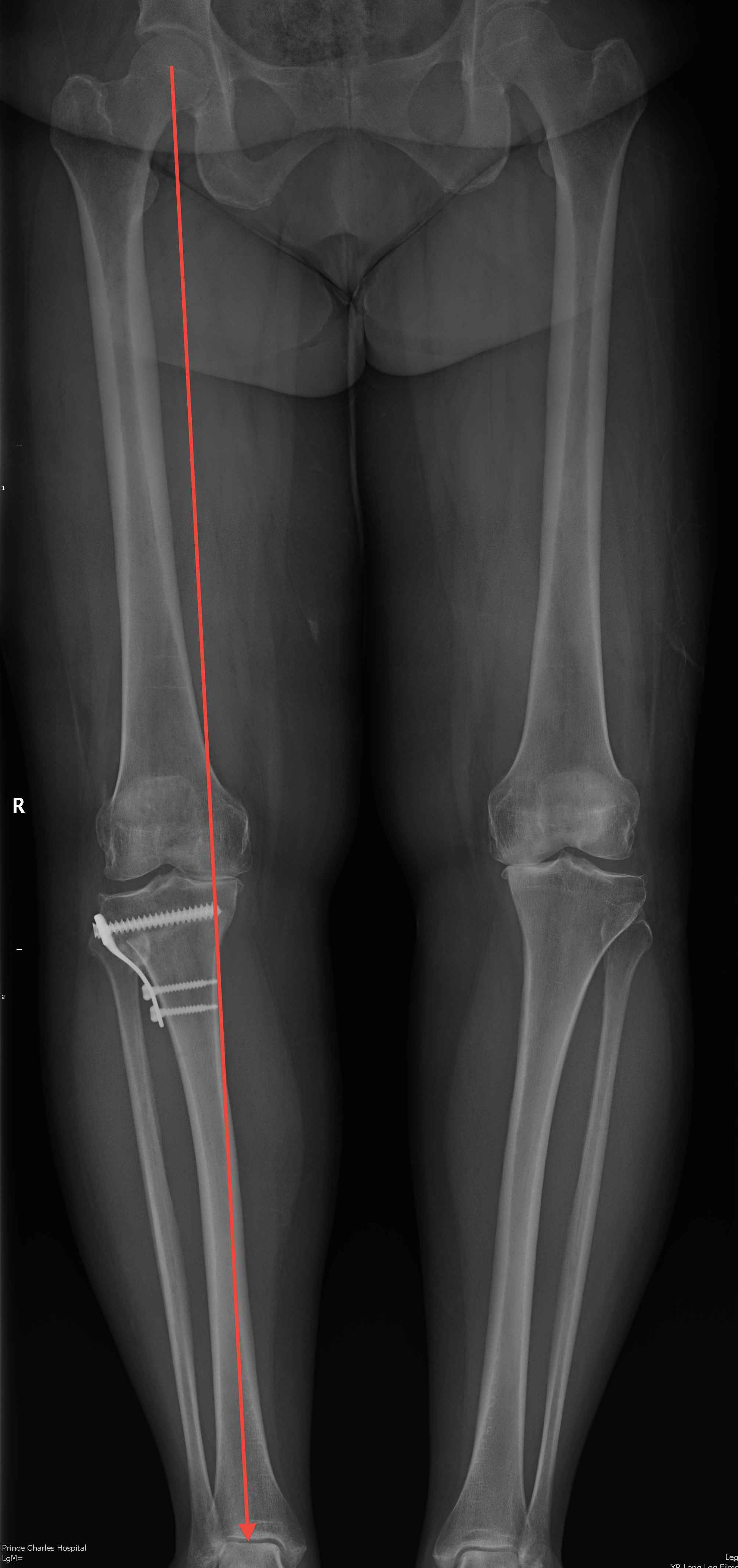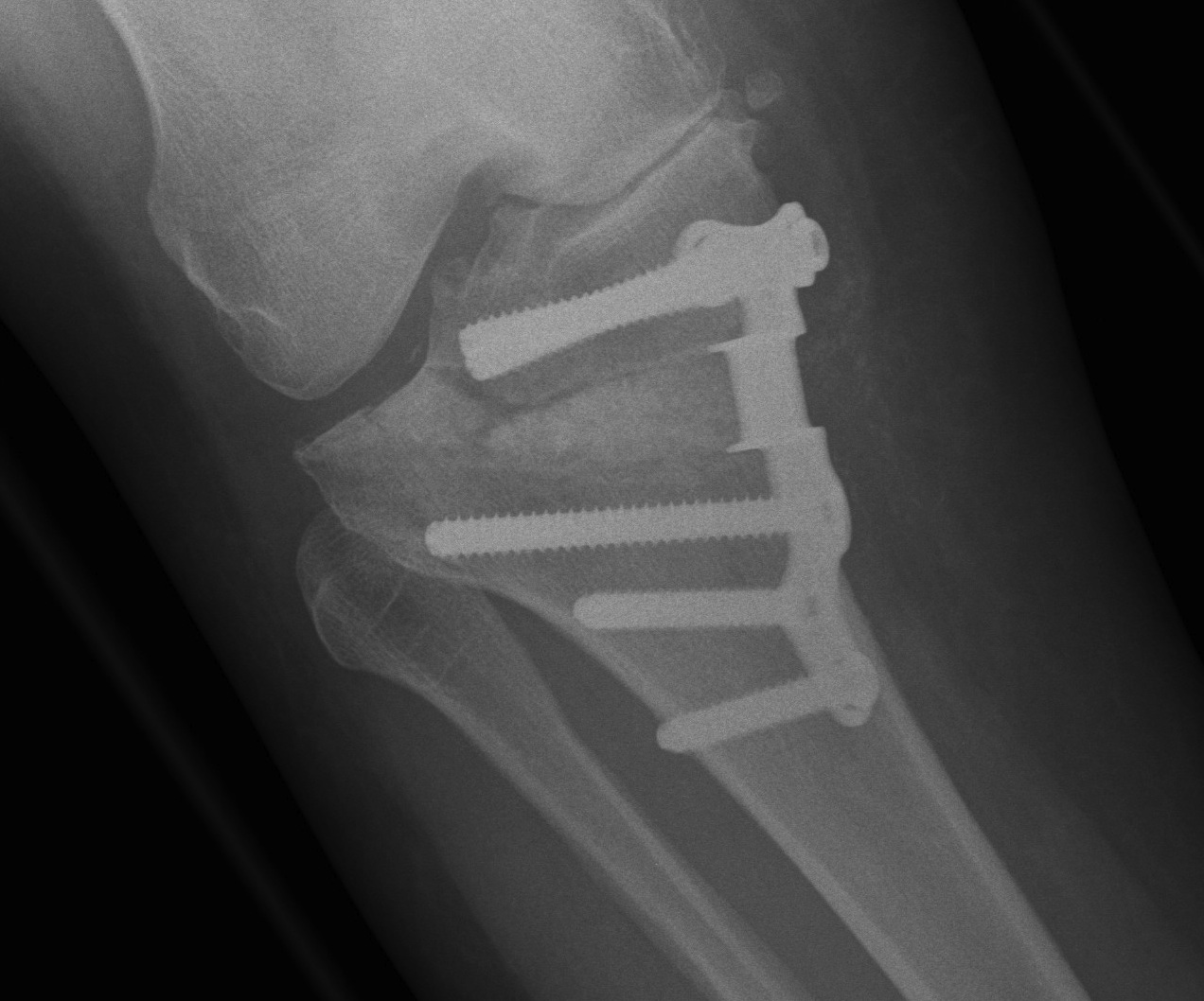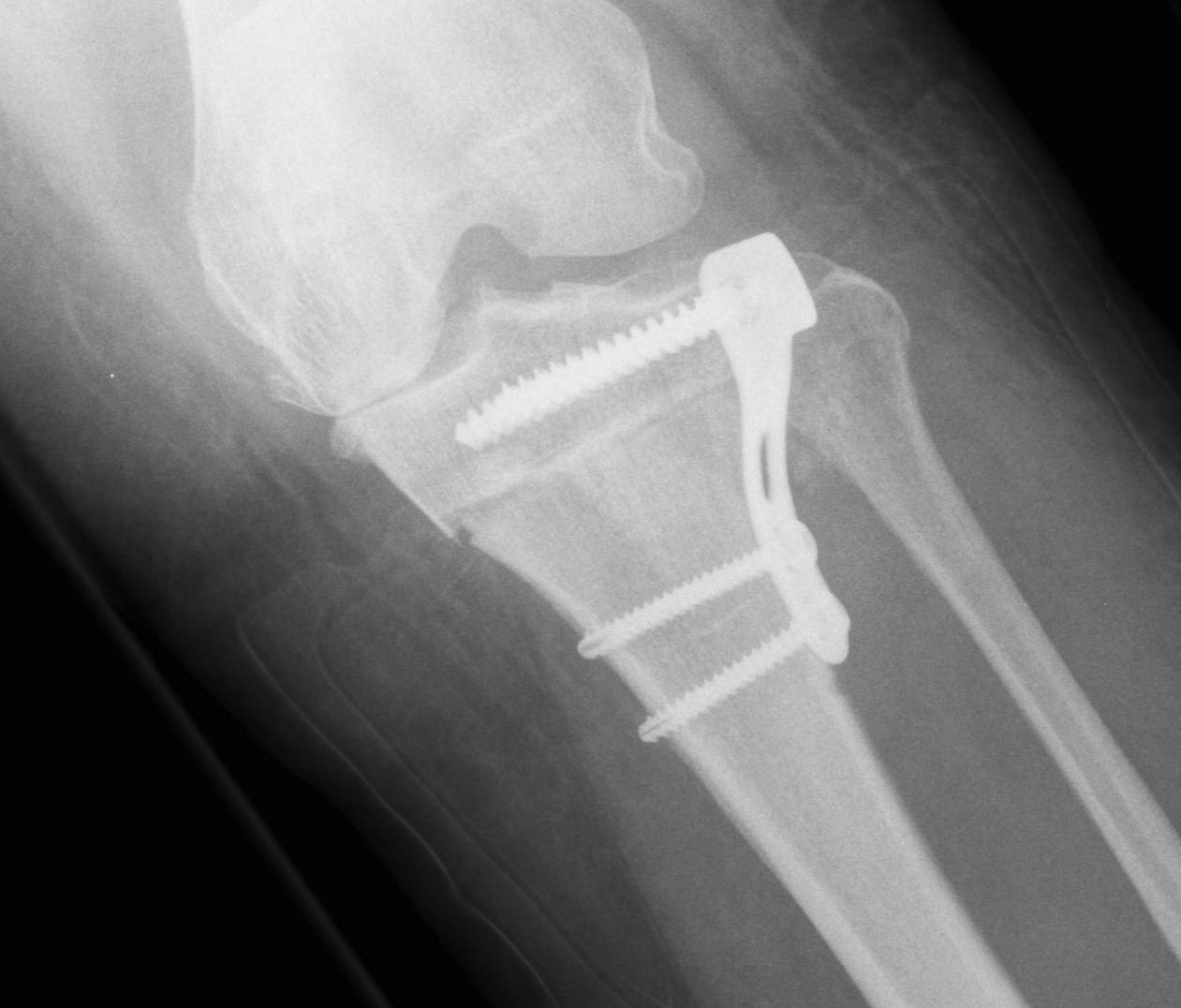Undercorrection / loss of correction
Most important factor in good results and duration of results
- must correct to 8o of valgus
- mechanical axis must pass through lateral joint line

Causes
- inadequate initial correction
- loss of correction (failure fixation, failure bone grafts, non union)
CPN Palsy
Common 2-3%
- pressure from cast or
- direct injury during operation (closing wedge)
- anterior compartment syndrome (opening wedge)
Fracture
A. Intra-articular

Occur in opening or closing wedge
Causes
- proximal fragment too small
- osteotomy too incomplete / trying to preserve far cortex for stability
Prevention
- proximal fragment minimum 15 mm thick
- osteotomy within 10 mm of far cortex
- drill holes in far cortex
- slow correction to allow stress relaxation
B. Unstable Osteotomy / Fracture Far Cortex


Avoid
- don't penetrate medial lateral side
- slow correction
- after plastic deformity / not fracture
Instability
- place a Richards staple / plate over fracture site
Compartment syndrome
Unknown incidence
Avoid by
- reduced by using drain
- don't close compartment
- avoid regional blocks
- monitor closely
Infection
Can complicate future TKR
- difficult to manage
- essentially have infected fracture
- principles of control infection / maintain stability / obtain healing
DVT/PE
Up to 40% rate of DVT
- reports of fatal PE
- need to use prophylaxis
Non union
Problematic in opening wedge
- smoker
- diabetic
- large corrections
<1% incidence in closing wedge above tibial tuberosity
Patella baja
Closing wedge
- caused by immobilisation and contracture
- eradicated by rigid internal fixation and aggressive early ROM
Problems
- anterior knee pain
- subsequent TKR difficult
Also seen in anterior wedge
